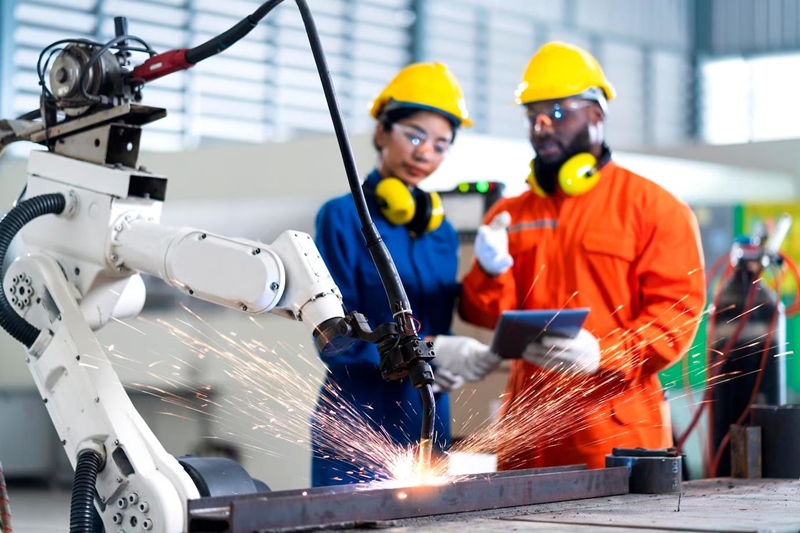Thousands of years ago engineering was at the forefront of human development. It is the practice of designing, constructing, and maintaining physical objects such as machines, systems, and processes using scientific and mathematical concepts. The field of engineering is developing at a previously unheard-of rate, along with technology. In this fast-changing landscape, innovative trends are reshaping the way engineers from reputable engineering firm approach problem-solving, design, and implementation. The engineering sector is undergoing a significant shift as a result of advancements in automation, digitalisation, sustainability, and artificial intelligence. Now let’s examine some of the most important trends influencing the engineering industry today in this article.
The Rise of Sustainable Engineering
In recent years, sustainability has grown significantly in engineering. With increasing public awareness of environmental concerns, such as climate change, engineers are actively seeking ecologically friendly solutions that minimize their impact on the planet. Sustainable engineering endeavors to develop projects and technologies that fulfill present needs while ensuring the well-being of future generations. Significant advancements in waste reduction techniques, water conservation technologies, green building design, and renewable energy systems have resulted from the increased focus on sustainability.
Utilizing renewable energy sources is a crucial aspect of sustainable engineering. Geothermal, hydro, solar, wind, and other renewable energy sources are now competitive substitutes for conventional fossil fuels. Complex systems are being created by engineers to efficiently capture and store renewable energy, hence boosting its availability and reducing its price. The move towards sustainability is being impacted by environmental concerns as well as a rising demand from customers and businesses for greener and more sustainable solutions.
The Proliferation of Automation and Robotics
Engineering has long included automation and robots, but recent developments have expedited their application throughout industries. Nowadays, manufacturing, shipping, healthcare, and even construction all employ robots more and more. Automation is becoming more prevalent, which has increased production, decreased human error, and enhanced safety in dangerous areas.
In manufacturing, robots are taking over repetitive and labor-intensive tasks, allowing human workers to focus on more complex and creative aspects of production. Collaborative robots, or cobots, are designed to work alongside humans, enhancing teamwork and efficiency in factory settings.
In construction, robots and autonomous vehicles are transforming the way buildings are erected. Bricklaying robots, 3D-printing systems, and robotic drones for surveying are streamlining construction processes, reducing construction time, and minimizing costs.
Although automation has many advantages, it also raises concerns about the future of labour and job loss. To make sure that the advantages of automation are dispersed fairly throughout society, engineers must collaborate closely with social scientists and legislators.
Digital Twin Technology: Revolutionizing Engineering
Digital twin technology is another transformative trend that is reshaping the engineering landscape. A digital twin is a virtual replica of a physical object, process, or system. It allows engineers to simulate, analyze, and optimize real-world scenarios in a risk-free digital environment. By collecting real-time data from sensors and IoT devices, digital twins can mimic the behavior of physical assets and provide valuable insights for predictive maintenance, performance optimization, and troubleshooting.
This technology finds applications in various fields, from manufacturing and construction to aerospace and healthcare. In the manufacturing sector, digital twins help optimize production processes, reduce downtime, and improve product quality. In the construction industry, digital twins aid in efficient project planning, resource allocation, and progress monitoring. Engineers can identify potential issues and address them in the virtual realm before they manifest in reality, saving time and resources.
With the advent of artificial intelligence (AI), digital twin technology is becoming even more powerful. AI-driven digital twins can learn from historical data, adapt to changing conditions, and make informed decisions autonomously. This level of sophistication has tremendous potential to revolutionize various engineering disciplines.
The Advent of AI and Machine Learning in Engineering
Artificial Intelligence (AI) and Machine Learning (ML) have garnered significant attention in recent years, and their impact on engineering is profound. AI and ML technologies are being integrated into various engineering processes, enabling engineers to analyze vast amounts of data, identify patterns, and make data-driven decisions.
In structural engineering, AI can analyze complex data sets to optimize building designs for enhanced safety and cost-efficiency. ML algorithms can predict material performance and structural behavior, leading to better building designs with increased resilience.
In civil engineering, AI is being used for traffic management and urban planning. It can analyze traffic patterns, predict congestion, and suggest optimal routes for improved transportation systems. Additionally, AI-powered simulations can help engineers design smarter cities, with considerations for energy efficiency and environmental sustainability.
AI is also revolutionizing product design and optimization. Engineers can leverage AI-generated models and simulations to explore a vast design space, resulting in innovative and efficient products.
Moreover, AI is playing a significant role in predictive maintenance. By analyzing sensor data from machines and systems, AI can anticipate failures and schedule maintenance before critical issues occur. This approach saves time and resources while reducing downtime and equipment failure risks.
The Emergence of Nanotechnology
Nanotechnology, the manipulation of matter on an atomic and molecular scale, has been steadily gaining momentum in various engineering fields. Its impact on medicine, electronics, materials science, and environmental engineering is particularly notable.
Nanotechnology has made it possible for enhanced drug delivery methods and tailored therapy in medicine. Nanoparticles are being developed by engineers that can transport pharmaceuticals specifically to particular cells or tissues, reducing adverse effects and improving therapeutic effectiveness.
Nanotechnology has made it possible to create more compact and potent electronics. Electronic components are being produced more quickly and effectively thanks to the use of novel nanomaterials.
Environmental engineering benefits from nanotechnology through improved water purification and pollution remediation. Nanomaterials can remove contaminants from water more effectively and efficiently than conventional methods.
Overall, nanotechnology offers the potential to revolutionize engineering across multiple industries, unlocking new possibilities for innovation and progress.

 by
by 
